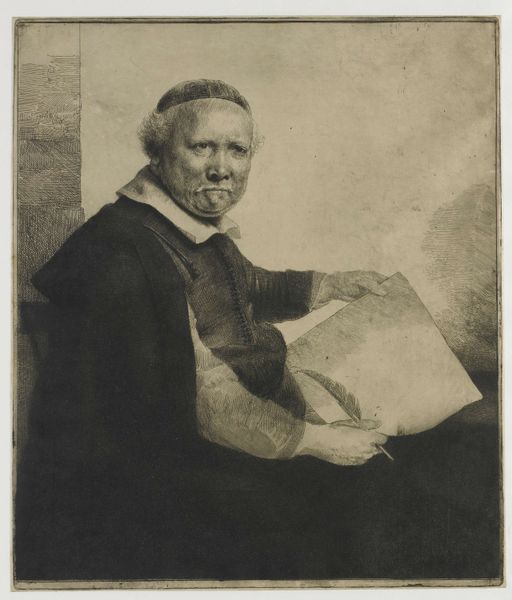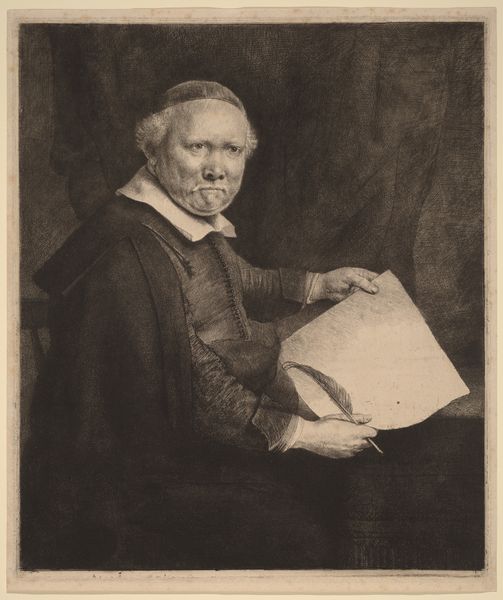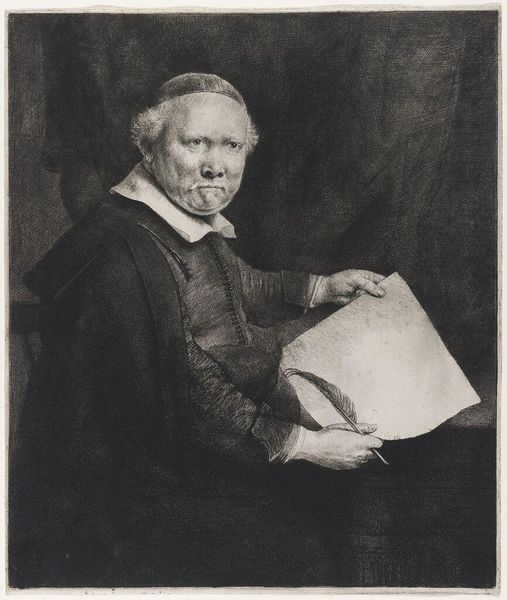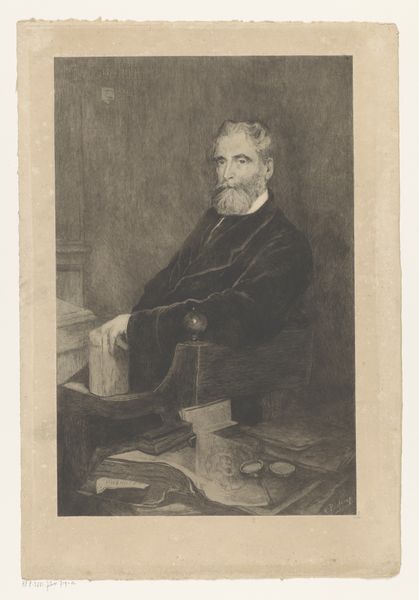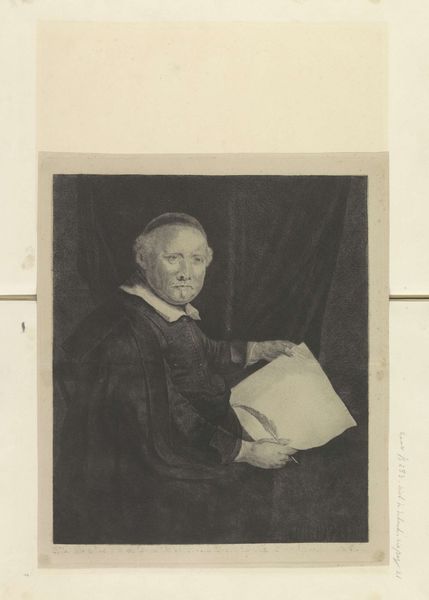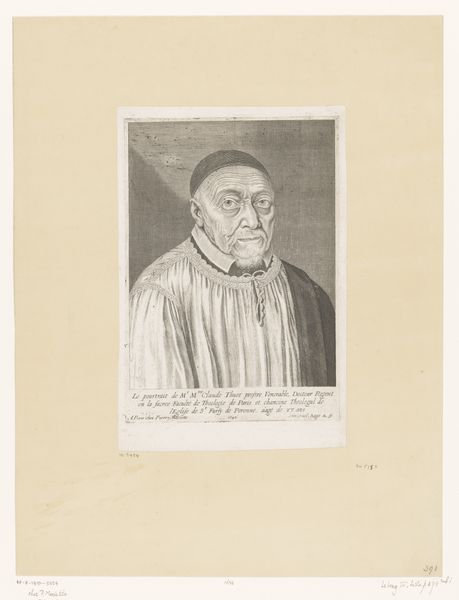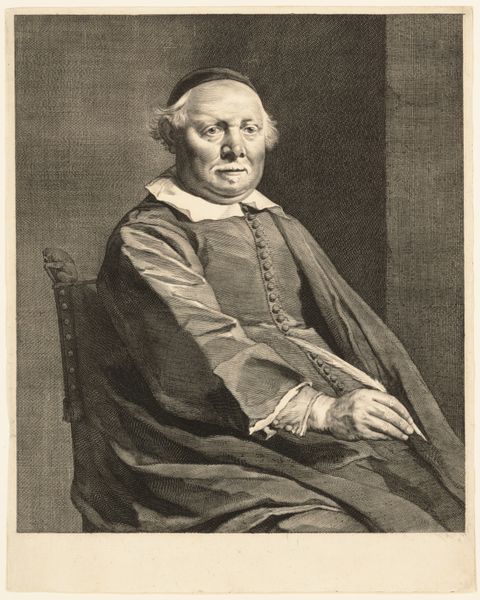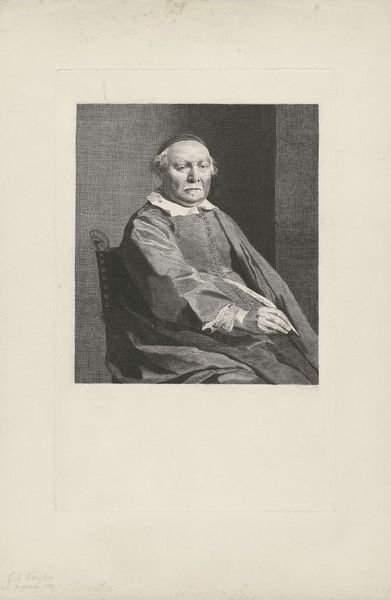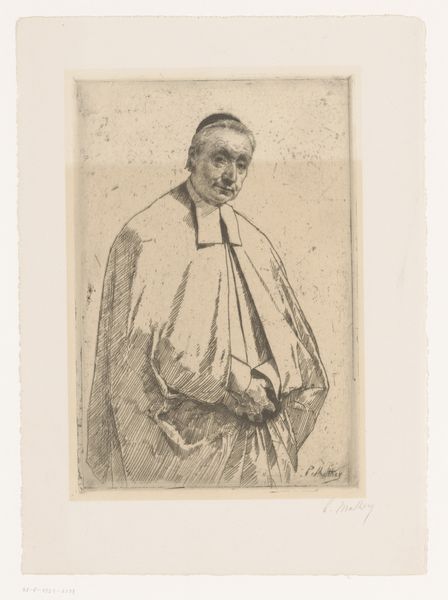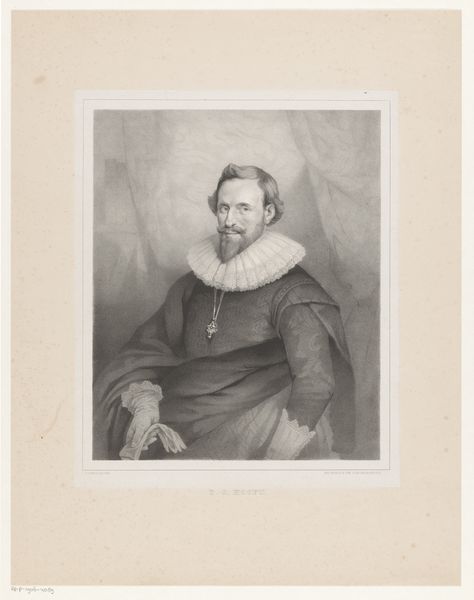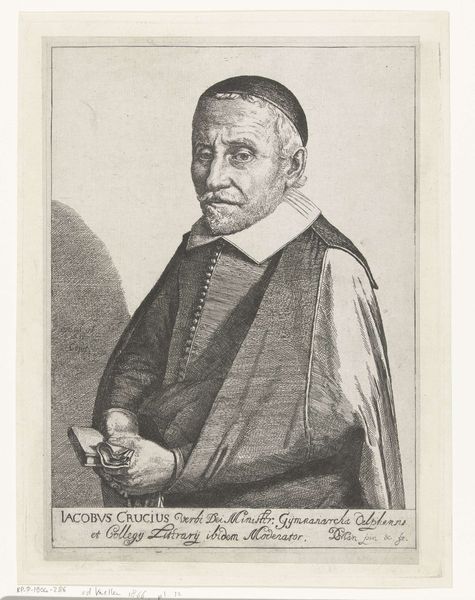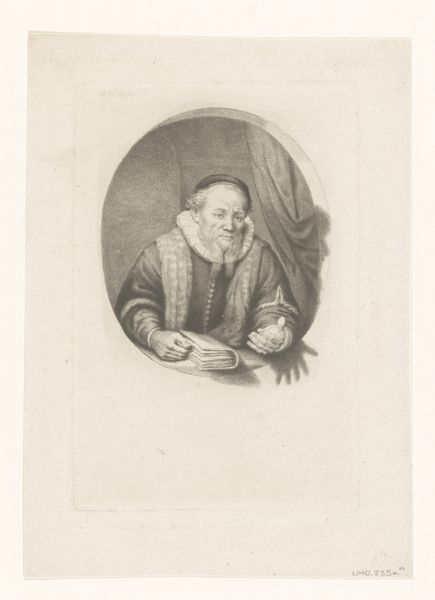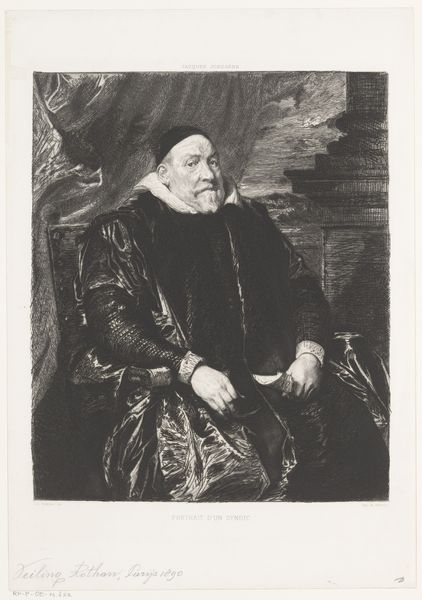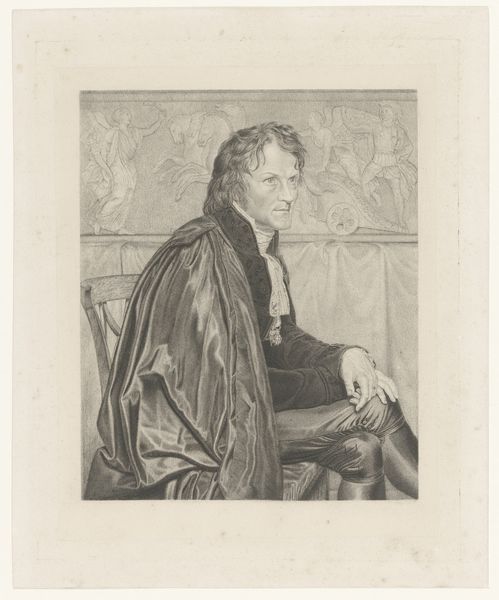
Dimensions: height 358 mm, width 306 mm
Copyright: Rijks Museum: Open Domain
Editor: This is "Portret van Lieven Willemsz van Coppenol", a portrait made sometime between 1733 and 1797 by Pierre François Basan. It’s an engraving. I’m struck by how directly he seems to be looking at the viewer, almost like he's about to say something. What stands out to you in this piece? Curator: It’s the writing implement itself that arrests my attention. Consider the quill he holds: It signifies not merely literacy, but a conscious connection to tradition. Its feathered end echoes ideas of aspiration and transcendence, reaching toward the heavens while grounded in the earthly act of inscription. Observe the document in his other hand, likely a legal text given Coppenol's profession as a writing master and lawyer; these symbols converge, representing authority, knowledge, and societal contribution. Editor: That's interesting, I hadn't thought about the quill itself being symbolic, just that he was a writer. So, the feather points to a kind of… higher purpose? Curator: Precisely! The quill acts as a conduit, channeling thoughts into tangible form, preserving memory, shaping understanding across generations. And in portraiture of this era, consider the context. The rise of the middle class, the importance of individual legacy... These objects weren't simply props; they broadcast status, aspiration, and a profound sense of self. What does this tell us about Coppenol and the values he wished to project? Editor: That helps me see the image as more than just a record of his likeness, but also a statement about his role in society. Thanks for pointing out how those objects speak to that. Curator: And hopefully, it sparks an awareness of how seemingly simple images can carry so much historical and personal significance. Editor: Definitely something I'll keep in mind as I study more art!
Comments
No comments
Be the first to comment and join the conversation on the ultimate creative platform.
